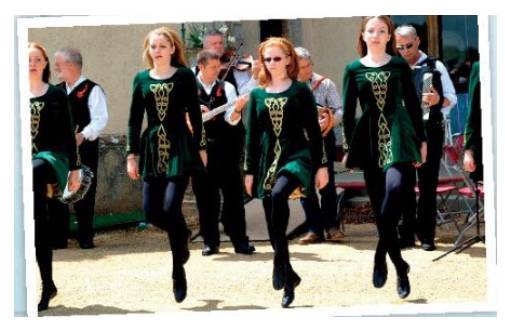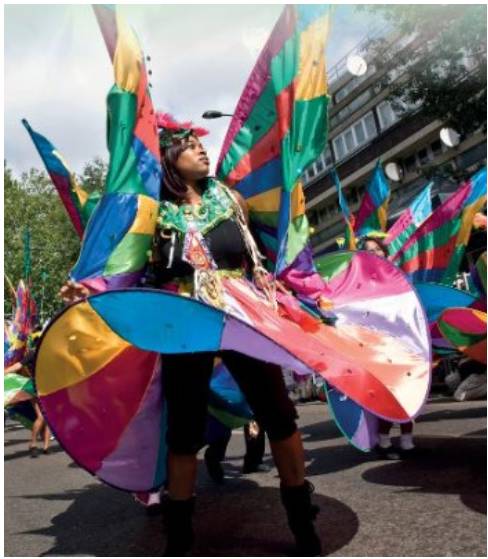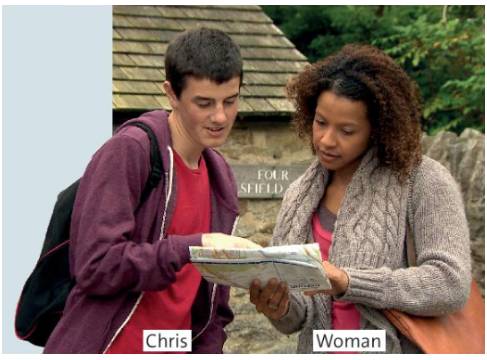Hãy nhập câu hỏi của bạn vào đây, nếu là tài khoản VIP, bạn sẽ được ưu tiên trả lời.

1. Is he/she learning English? Yes, he / she is.
Are they learning English? Yes, they are.
(Cô ấy/ Anh ấy/ Họ đang học ngôn ngữ à? – Đúng vậy.)
2. What is he/she doing now? He's / She's watching TV.
What are they doing now? They're watching TV.
(Cô ấy/ Anh ấy/ Họ đang làm gì? – Cô ấy/ Anh ấy/ Họ đang xem tivi.)
3. Is he/she learning the same language? No, he/she isn't.
Are they learning the same language? No, they aren't.
(Cô ấy/ Anh ấy/ Họ có học cùng một ngôn ngữ không? – Có.)

Bạn có hiểu chử Việt Nam không viết ra tiếng anh là :
Do you understand Vietnamese?

| - What are the girls doing? (Những cô gái đang làm gì?) - They are dancing. (Họ đang khiêu vũ/ nhảy.) |
| - What is she wearing? (Cô ấy đang mặc gì) - She is wearing colorful colorful costumes. (Cô ấy đang mặc trang phục đầy màu sắc.) |
| - What are Christ and the woman doing? (Christ và người phụ nữ đang làm gì?) - They are looking at the map. (Họ đang xem bản đồ.) |
| - Where are the two men riding? (Hai người đang ông này đang đi xe đạp ở đâu?) - They are riding in a mountainous area. (Họ đang đi xe đạp ở khu đồi núi.) |

Do you like pop music?
Yes, i do
Do they live in Stockholm?
No, they don't
Does Mike play football on Sunday?
Yes, he does
Does Jane’s sister help her mother?
Yes, she does
Do we have an English test every week?
No, we don't
Do the twins study in your school?
Yes, they do
Does your brother work at the weekend?
No, he doesn't

1 I read book
2 he read book
3 she read book
4 I am reading book
5 he is reading book
6 she is reading book

| 1 | Hiện tại đơn | Hiện tại tiếp diễn | Tương lai đơn |
| Cấu tạo | a. “To be” verb: i. S + am/are/is + … ii. S + am/are/is + not… b. Regular verb: i. S + V(s/es) + … ii. S + do + V + not … Or ii. S + don’t + V… | a. S + am/ is/ are + V-ing B. S + am/ is/ are + not + V-ing | a. S + will + V b. S + will not + V |
| cách dùng | a. thói quen b. Chân lý | a. hành động đang xảy ra. b. sự việc nói chung đang diễn ra. c. hành động sắp xảy ra trong tương lai gần. d. hành động thường được lặp đi lặp lại | a. diễn đạt quyết định lúc nói B. Đưa ra yêu cầu, đề nghị, lời mời c. diễn đạt dự đoán vô căn cứ |
| dấu hiệu nhận biết | a. Always, usually, often, frequently, sometimes, etc. b. Every day/week/month/year c. Once/twice/three times, a day/week/month/year | a. Now, right now, at the moment, at present. b. Look!, listen!, keep silent! | a. In + time b. Tomorrow c. Next day/ week/ month/ year d. Think/ believe/ suppose/ perhaps/ probably |
| 2 | How much…? | How many…? |
| hình dáng | How many shapes are there? | |
| kích thước | How many inches are in 1 foot? | |
| màu sắc | How many colors are there? | |
| nơi sống | How many places have you lived before? | |
| giá cả | How much does this book cost? | |
| số lượng | How much hair does she have? cannot count individually/too much to count: - hair - light - dust - rice - dirt - water - liquid - air - gas - thread | How many books are there? can count individually: - books - shoes - tables - chickens - light bulbs - grain of rice - strain of hair |
| 3 | a | an |
| cách dùng | 1. before a consonant. - a car, a rock, a bird, a dozen, a hundred, a thousand, a half, a third, a fifth, a day, a week 2. before words with 1st syllable starts with the sound of a consonant - a university, a united nation, a union meeting 3. before letters with syllable starts with the sound of a consonant (B, C, D, G, J, K, P, Q, T, U, V, W, Y, Z) - a B, a U, a Y, a Z | 1. before words start with a,e,i,o - an apple, an orange 2. before words with 1st syllable starts with the sound of vowels. - an hour, an heir, an honor, an unforgetable gift, an undoable job, an umbrella 3. before letters with syllable starts with the sound of vowels. (A, E, F, H, I, L, M, N, O, R, S, X) - an A, an E, an F, etc. - an S.O.S |
| 4 | add -S | add-ES | add -IES | add -VES | |||
| Regular nouns | 1 car 2 cars 1 dog 2 dogs 1 book 2 books 1 house 2 houses 1 apple 2 apples | Ends in S, CH, SH, X, Z | 1 bus 2 buses 1 match 2 matches 1 dish 2 dishes 1 box 2 boxes 1 quiz 2 quizzes | Ends in consonant+Y | remove Y 1 city 2 cities 1 baby 2 babies 1 story 2 stories 1 party 2 parties 1 country 2 countries | Ends in F, FE | remove F/FE 1 leaf 2 leaves 1 wolf 2 wolves 1 life 2 lives 1 knife 2 knives exceptions: roof - roofs cliff - cliffs |
| Ends in vowel+Y | 1 day 2 days 1 key 2 keys 1 boy 2 boys 1 guy 2 guys 1 donkey 2 donkeys | Ends in consonant+O | 1 hero 2 heroes 1 echo 2 echoes 1 tomato 2 tomatoes 1 potato 2 potatoes exceptions: piano - pianos photo - photos | Irregular Nouns | 1 man 2 men 1 child 2 children 1 foot 2 feet 1 tooth 1 mouse 1 person | No change | 1 sheep 2 sheep 1 deer 2 deer 1 fish 2 fish 1 series 2 series 1 species 2 species |
| Ends in vowel+O | 1 zoo 2 zoos 1 radio 2 radios 1 stereo 2 stereos 1 video 2 videos 1 kangaroo 2 kangaroos |
| 5 | more than | the most |
| short adj | The fox is stronger than the cat. | Giraffe has the longest neck. |
| long | The cat is more curious than the dog. | Cats are the most popular pet. |
6.
1. Let’s go to the movie theater!
2. a. What about going for a walk?
b. How about going out for lunch?
3. Why don’t we watch a movie?
4. a. Would you mind opening the door for me?
b. Do you mind if I smoke?
7. a. How do I get to + place?
First, take a left, then a right. Cross the street and you are there.
B. Where is the + place/thing?
It’s opposite/on the left/right…
| 8 | Can | Should |
| cấu tạo | S + can + V + O S + cannot/can't + V + O Can + S + V + O? | S+should+V+O S+should not/shouldn't+V+O Should+S+V+O? |
| cách dùng | 1. Khả năng của người/vật - He can draw manga. 2. Xin phép, đề nghị, yêu cầu, gợi ý - Can I use your pencil? | 1. diễn tả lời khuyên |
9.
Quy tắc 1: Phát âm là /s/ khi tận cùng từ bằng -p, -k, -t, -f.
EX: stops [stops] works [wə:ks]
Quy tắc 2: Phát âm là /iz/ khi tận cùng từ bằng -s,-ss,-ch,-sh,-x,-z,-o,-ge,-ce
EX: misses /misiz/ ; watches [wochiz]
Quy tắc 3: Phát âm là /z/ đối với những từ còn lại
EX: study - studies; supply-supplies…..

Answer
- The environment is a combination of natural and social elements that surrounds the outside of a system or an individual. They affect this system and determine its trend and status. An environment can be considered as a set, in which the system under consideration is a subset.
- The environment contains the natural element and the physical element of the element making the relationship of the relationship, be around human, has the effect to life, product, exists, development of human and natural .
Hãy cùng nhau bảo vệ Earth-chan :3 Avatar của mình chủ đề cũng là bảo vệ môi trường Trái đất (●´∀`●)
-Môi trường là gì?
Trả lời: The environment is a combination of natural and social elements that surrounds the outside of a system or an individual.
-Khái niệm về môi trường?
Trả lời:
Human living environment according to function is divided into categories:
* The natural environment includes natural factors such as physics, chemistry, biology, human survival, but also more or less humanly influenced. It is the sunlight, mountain river, sea, air, animals, plants, soil, water ... The natural environment gives us breathable air, land to build houses, transplant , provide human resources for the production, consumption and storage, assimilate the waste, provide beautiful scenery to entertain, enrich the human life .
* The social environment is the totality of relations between people. These are the laws, institutions, commitments, regulations, assessments ... at different levels such as United Nations, Association of States, States, Provinces, Districts, Offices, Villages Family, family, group, religious organizations, mass organizations ... Social environment orientates human activities in a certain framework, creating collective strength to facilitate the Developing, making human life different from other creatures.
* In addition, the concept of artificial environment, including all human factors, is made up into the comforts of life, such as cars, aircraft, housing, urban areas, artificial parks ...
The environment in a broad sense is all the natural and social factors necessary for human living and production, such as natural resources, air, land, water, light, landscapes, relations society...
The environment in a narrow sense does not take into account natural resources, but only natural and social factors that directly relate to the quality of human life. For example, the student's environment consists of a school with teachers, friends, school rules, classrooms, playgrounds, laboratories, school gardens, social organizations such as the Youth Union, families, families, villages with unspecified regulations, word of mouth but still recognized, enforced and administrative agencies at all levels with laws, decrees, circulars, regulations.
In short, the environment is all around us, giving us the basis to live and grow.





- Hỏi :
Does Julia Robert French?
- Trả lời : No, she isn't [ Is not ] French.
=> Công thức :
Thể
Động từ “tobe”
Động từ “thường”
Khẳng định
Ex:
I + am;
We, You, They + are He, She, It + is
Ex: I am a student. (Tôi là một sinh viên.)
We, You, They + V (nguyên thể)
He, She, It + V (s/es)
Ex: He often plays soccer. (Anh ấy thường xuyên chơi bóng đá)
Phủ định
is not = isn’t ;
are not = aren’t
Ex: I am not a student. (Tôi không phải là một sinh viên.)
do not = don’t
does not = doesn’t
Ex: He doesn’t often play soccer. (Anh ấy không thường xuyên chơi bóng đá)
Nghi vấn
Q: Am/ Are/ Is (not) + S + ….?
A:Yes, S + am/ are/ is.
No, S + am not/ aren’t/ isn’t.
Ex: Are you a student?
Yes, I am. / No, I am not.
Wh + am/ are/ is (not) + S + ….?
Ex: Where are you from? (Bạn đến từ đâu?)
Q: Do/ Does (not) + S + V(ng.thể)..?
A:Yes, S + do/ does.
No, S + don’t/ doesn’t.
Ex: Does he play soccer?
Yes, he does. / No, he doesn’t.
Wh + do/ does(not) + S + V(nguyên thể)….?
Ex: Where do you come from? (Bạn đến từ đâu?)
Lưu ý
– Thêm s vào đằng sau hầu hết các động từ: want-wants; work-works;…
– Thêm es vào các động từ kết thúc bằng ch, sh, x, s: watch-watches;
miss-misses; wash-washes; fix-fixes;…
– Bỏ y và thêm ies vào sau các động từ kết thúc bởi một phụ âm + y:
study-studies;…
– Động từ bất quy tắc: Go-goes; do-does; have-has.
Cách phát âm phụ âm cuối s/es: Chú ý các phát âm phụ âm cuối này phải dựa vào phiên âm quốc tế chứ không dựa vào cách viết.
– /s/:Khi từ có tận cùng là các phụ âm /f/, /t/, /k/, /p/ , /ð/
– /iz/:Khi từ có tận cùng là các âm /s/, /z/, /∫/, /t∫/, /ʒ/, /dʒ/ (thường có tận cùng là các chữ cái ce, x, z, sh, ch, s, ge)
– /z/:Khi từ có tận cùng là nguyên âm và các phụ âm còn lại
- HỎi : A: Where is Molly?
- Trả Lời : B: She is Feeding her cat downstairs.
- Công thức :
1. Khẳng định:
S + am/ is/ are + V-ing
Trong đó: S (subject): Chủ ngữ
am/ is/ are: là 3 dạng của động từ “to be”
V-ing: là động từ thêm “–ing”
CHÚ Ý:
– S = I + am
– S = He/ She/ It + is
– S = We/ You/ They + are
Ví dụ:
– I am playing football with my friends . (Tôi đang chơi bóng đá với bạn của tôi.)
– She is cooking with her mother. (Cô ấy đang nấu ăn với mẹ của cô ấy.)
– We are studying English. (Chúng tôi đang học Tiếng Anh.)
Ta thấy động từ trong câu sử dụng thì hiện tại tiếp diễn cần phải có hai thành phần là: động từ “TO BE” và “V-ing”. Với tùy từng chủ ngữ mà động từ “to be” có cách chia khác nhau.
2. Phủ định:
S + am/ is/ are + not + V-ing
CHÚ Ý:
– am not: không có dạng viết tắt
– is not = isn’t
– are not = aren’t
Ví dụ:
– I am not listening to music at the moment. (Lúc này tôi đang không nghe nhạc.)
– My sister isn’t working now. (Chị gái tôi đang không làm việc.)
– They aren’t watching TV at present. (Hiện tại tôi đang không xem ti vi.)
Đối với câu phủ định của thì hiện tại tiếp diễn ta chỉ cần thêm “not” vào sau động từ “to be” rồi cộng động từ đuôi “–ing”.
3. Câu hỏi:
Am/ Is/ Are + S + V-ing ?
Trả lời:
Yes, I + am. – Yes, he/ she/ it + is. – Yes, we/ you/ they + are.
No, I + am not. – No, he/ she/ it + isn’t. – No, we/ you/ they + aren’t.
Đối với câu hỏi ta chỉ việc đảo động từ “to be” lên trước chủ ngữ.
Ví dụ:
– Are you doing your homework? (Bạn đang làm bài tập về nhà phải không?)
Yes, I am./ No, I am not.
– Is he going out with you? (Anh ấy đang đi chơi cùng bạn có phải không?)
Yes, he is./ No, he isn’t.
Lưu ý:
Thông thường ta chỉ cần cộng thêm “-ing” vào sau động từ. Nhưng có một số chú ý như sau:
– Ta bỏ “e” rồi thêm “-ing”.
Ví dụ: write – writing type – typing come – coming
– Tận cùng là HAI CHỮ “e” ta không bỏ “e” mà vẫn thêm “-ing” bình thường.
– Ta nhân đôi phụ âm cuối rồi thêm “-ing”.
Ví dụ: stop – stopping get – getting put – putting
– CHÚ Ý: Các trường hợp ngoại lệ: begging – beginning travel – travelling prefer – preferring permit – permitting
– Ta đổi “ie” thành “y” rồi thêm “-ing”. Ví dụ: lie – lying die – dying
1.
- Do you to learn English?
Do + S + Vo ?
- Yes, I do.
2.
- Have you ever seen this cat?
Have + S + Vpp ?
- No, I haven't.